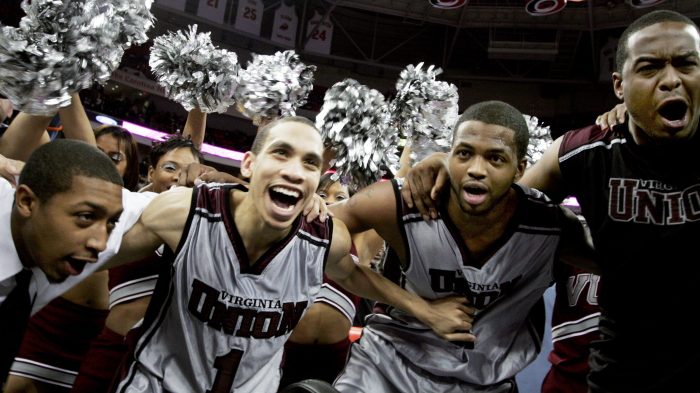The Historic Moment at Virginia Union
Long before the phrase “dropping the mic” became a cultural phenomenon, Luqman Jaaber, a senior point guard at Virginia Union, made a bold statement during Midnight Madness at Barco-Stevens Hall, home of the Panthers. Even though the start of the 2004-05 season was weeks away, Jaaber took the microphone and confidently declared that the Panthers would secure the Division II national title. The crowd was taken aback by his assertion.
Reflecting on that moment years later, Jaaber, now 44, remarked, “They were a little shocked by what I said. But I made that statement because I believed in the potential of our team, and I knew it would inspire the commitment needed to achieve our goals.” With a mix of veteran players, a renowned coach, and the spirited proclamation, Virginia Union went on to clinch the 2005 Division II NCAA men’s basketball title—the last national title won by an HBCU in men’s NCAA basketball history. In total, there have been just six HBCU schools that have claimed this honor.
The Challenge for HBCUs
Despite their historical achievements, it has been two decades since an HBCU has captured a men’s NCAA national title. This drought arises from various factors, including top players opting out of HBCUs for schools that attract greater media attention and resources, as well as players who transfer after honing their skills elsewhere. Antwan Walton, a former forward and center for Virginia Union, expressed, “So far, no one’s been able to assemble a team like ours. Our bench was deep, filled with players who could start anywhere else, but we stayed unified because we believed in one another.”
The Foundation of Trust
The trust in Virginia Union’s basketball program was cemented when the school brought on Dave Robbins as its first white head coach in the CIAA in 1978. Robbins later retired in 2008, leaving behind a legacy of over 700 wins and three national titles, alongside being inducted into the College Basketball Hall of Fame in 2012. Despite his impressive background, none of the players from the 2005 championship team made it to the NBA, which highlighted the unique makeup of their roster.
A Unique Team Composition
The championship squad was distinct in that no starter stood taller than 6-foot-6. This meant players like the 6-4 Walton had to adapt against larger opponents, while 5-10 Jaaber led the nation in free-throw percentage and was named the CIAA Defensive Player of the Year. The team utilized exceptional speed, athleticism, and defensive flair to make up for their lack of height. According to Robbins, “Jaaber was tough as nails and my floor coach. He was executing plays before I even called them.”
Overcoming Adversity
The team embraced their underdog status, with Jaaber noting, “We never saw size as a limitation; we played hard and smart.” Many players found themselves at Virginia Union due to second chances, such as Jaaber, who faced academic difficulties elsewhere but matured significantly during his time away from school. A pre-season exhibition match against Virginia Commonwealth University showcased their talents as they came from behind to secure a narrow victory, signaling their competitive spirit.
The Path to the National Championship
Despite stumbling early in the season, Virginia Union rallied, winning the CIAA Tournament and entering the NCAA playoffs. The team faced Catawba in the regional round, overcoming a daunting start to win. They were poised for redemption against Bowie State, who had previously defeated them, yet fell victim to their own arrogance during warm-ups. Virginia Union capitalized on an early technical foul against Bowie, which set the tone for a decisive victory and a trip to the Elite Eight.
Legacy of the Championship
Ultimately, Virginia Union’s journey culminated in their national championship victory against Bryant University, despite a slow start in the finals. They made history as the first team in NCAA tournament history to defeat four No. 1 seeds in consecutive games to win the title. In recognition of their achievement, the team was invited to the White House, although they didn’t have the chance to present their trophy to President George W. Bush. Reflecting on their success, Walton shared, “Winning was a way to inspire the youth in my community to chase their dreams and aims.”



